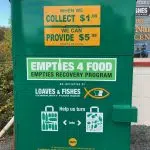
Failures by UK government and industry made London high-rise a ‘death trap’ in Grenfell Tower fire
LONDON (AP) — A damning report on a deadly London high-rise fire says decades of failures by government, regulators and industry turned Grenfell Tower into a “death trap” where 72 people lost their lives.
The years-long public inquiry into the 2017 blaze, the deadliest fire on British soil since World War II, concluded that there was no “single cause” of the tragedy. It said residents were let down by dishonest companies, weak or incompetent regulators and complacent government.
It said “many failings of a wide range of institutions, entities and individuals” led to the fire.
THIS IS A BREAKING NEWS UPDATE. AP’s earlier story follows below.


